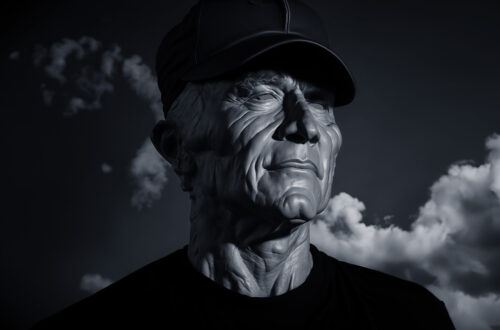
Ho’oponopono & Letting Go: The Path to Spiritual Liberation
Life, a beautiful yet puzzling journey, often lands us on crossroads where we encounter a medley of emotions and experiences. Each step carries its baggage, and each experience leaves an imprint. Imagine a technique, an ancient spiritual practice that guides us to release these burdens, to let go, and to make room for divine guidance. Enter the realm of Ho’oponopono, an ancient Hawaiian practice of reconciliation and forgiveness.
Herein, we embark on an enlightening journey into the heart of Ho’oponopono, as expounded by Dr. Ihaleakala Hew Len, inspired by Morrnah Nalamaku Simeona’s teachings. We’ll explore the intriguing parallels between this spiritual practice and the principles espoused in Dr. David Hawkins’ influential work ‘Letting Go.’ In doing so, we’ll illuminate the process of karmic cleaning, a practical pathway to spiritual liberation.
II. Understanding Ho’oponopono & The Concept of ‘Letting Go’
Four simple phrases: “I’m sorry. Please forgive me. Thank you. I love you” form the cornerstone of a transformative process called ‘cleaning.’ At its essence, ‘cleaning’ bears a striking resemblance to the concept of ‘Letting Go’ presented by Dr. Hawkins.
Both philosophies encourage releasing burdens that weigh down our souls – attachments, desires, regrets, and fears. By doing so, they open doors to a higher state of consciousness and spiritual awakening. The primary distinction, however, lies in the approach. ‘Letting Go’ leans on conscious effort, while Ho’oponopono proposes a unique model of the psyche that enables access to Divinity via the subconscious inner child.
III. The Root of Suffering: Attachment & Desire
One of the most profound human experiences is the intricate dance between attachment and desire. These forces, powerful and enticing, manifest in various forms—emotional bonds, material possessions, identity, and expected outcomes.
Dr. Hawkins contends that our attachment to these elements creates resistance, preventing life’s natural flow, causing suffering. In harmony with this notion, Ho’oponopono teaches us to ‘clean’ these attachments, aligning with the universe’s rhythm and leading us towards peace and harmony.
IV. The Conscious Shift: The Scale of Consciousness
The journey from the valleys of suffering to the peaks of spiritual liberation isn’t a linear path. It’s a winding road that navigates through different levels of consciousness, each representing distinct stages of the ego’s development.
In the lower rungs, the ego reigns supreme, acting as the puppeteer of our desires and fears. As we ascend, we begin to relinquish control, transitioning towards a state of powerlessness that opens the door to the divine. This shift, as Dr. Hawkins points out, is a game-changer. It allows the higher self to guide us, channelling divine wisdom and spiritual strength.
V. The Role of Ego & The Inner Child
The ego and the inner child are two pivotal actors in our spiritual journey. The ego, akin to a protective shell, springs from our attachment to our inner child’s karmic content. The more we ‘clean’ this content through Ho’oponopono, the less the ego’s dominance, fostering alignment with Divinity’s will.
This purification process forms the crux of Ho’oponopono’s teachings. It calls for a deep examination of our desires and attachments, advocating for a cleansing of the karmic data within our inner child, thereby sparking healing and personal development.
VII, Why You Must Access Divinity Through Your Inner Child
In both Ho’oponopono and Dr. Hawkins’ teachings, we’re guided towards higher states of consciousness. However, as suggested by Dr. Len’s Ho’oponopono, direct access to this divinity is beyond us. Instead, we navigate through our subconscious, our deep-sea of experiences and karmic data. This spiritual journey isn’t a direct leap but an inward dive. As we ‘clean’ our subconscious in Ho’oponopono, we illuminate a path to divine consciousness, a concept mirrored in other spiritual traditions like Kabbalism and Hinduism. So, our quest for higher consciousness involves inner exploration, shedding light on the divine that was always within us.
VII. The Mirror of Reality: Reflections of Our Inner State
The world as we perceive it is not a distinct, separate entity, but a mirror reflecting our inner state. It’s the divine light, filtered and refracted through the prism of our subconscious and superconscious minds.
This principle echoes through both Dr. Hawkins’ and Dr. Hew Len’s teachings. Both propose that the external reality we experience is deeply intertwined with our internal emotional and spiritual state. By cleaning the inner mirror through the practice of Ho’oponopono, we can transform our external reality, aligning it with love, peace, and higher consciousness.
VIII. The Power of Ho’oponopono and Letting Go
As we conclude this explorative journey, we can appreciate the profound synergy between the philosophies of Ho’oponopono and ‘Letting Go.’ Both propose a journey of inner transformation that pivots on releasing our burdens and opening ourselves to divine guidance.
However, Ho’oponopono offers a unique spin, introducing the concept of karmic cleaning as a practical pathway towards spiritual liberation. By embracing this pathway, we not only elevate our consciousness but also find a beacon of hope, a compass guiding us towards our true selves, and our divine destiny.


You May Also Like

Ho’oponopono: Embracing Divinity and Transcending the Illusion of the Self

Adventures Beyond The Known: Ho’oponopono and the Quest for Ultimate Freedom
